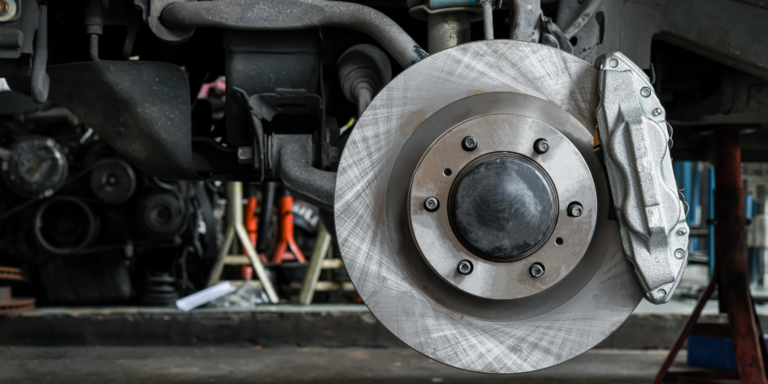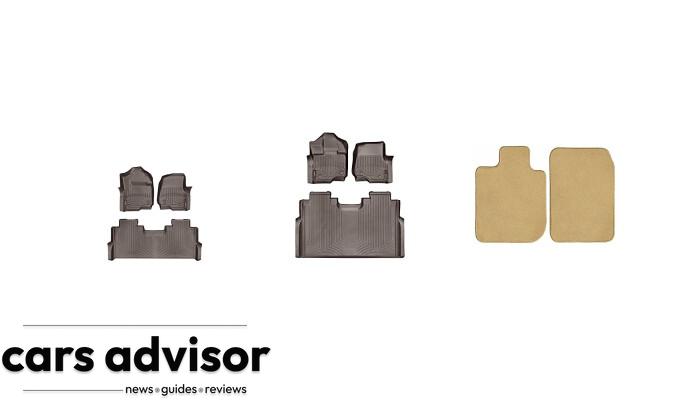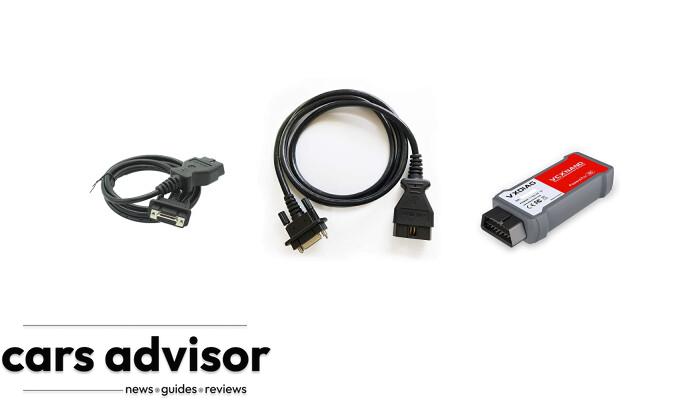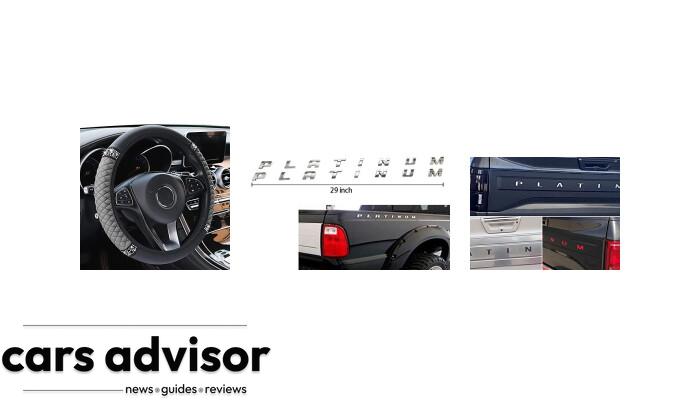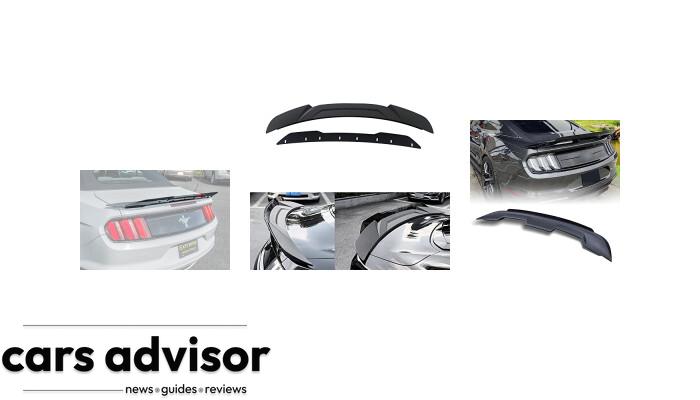Driving a car should be a smooth and enjoyable experience, but when your steering wheel starts turning by itself, it can quickly become frustrating and unnerving.
In this blog post, we will uncover the causes behind this mysterious phenomenon and provide you with effective solutions to get your steering back on track. Whether you’re an experienced driver or just starting out, understanding these issues is vital for both safety and convenience – so keep reading to regain control of your driving experience!
TLDR
- The steering wheel can turn by itself while driving.
- The cause of the steering wheel turning by itself can be due to issues with the rack and pinion or the pump outputting too much pressure, as well as alignment.
- Uneven tire pressure is a common cause of the steering wheel pulling to one side.
- A stuck caliper in the brakes can also cause the wheel to pull to one side.
- Loose bearings in the steering rack can cause the steering wheel to jerk out of the driver’s hands.
- The power steering rack can turn by itself, causing the steering wheel to move without input.
- The caster split being way off can cause the steering wheel to turn more to one side.
- The steering wheel can skip when turning due to issues with the power steering pump or the steering linkage.
- Proper maintenance and regular inspections can help prevent issues with the steering system.
Understanding The Causes Of A Steering Wheel Turning By Itself
There are various causes for a steering wheel turning by itself, including mechanical issues with the steering components, electrical problems with the power steering system, tire issues such as uneven pressure or bulges, misalignment of the wheels or suspension, and power steering system problems such as a malfunctioning pump outputting too much pressure.
Mechanical Issues
One common mechanical issue that can cause the steering wheel to turn by itself is a problem with the rack and pinion. The rack and pinion system is responsible for converting the rotational movement of your steering wheel into linear movement that steers your vehicle’s wheels.
If there are loose or damaged parts within this system, it can lead to erratic steering behavior, including instances where it seems like the steering wheel is turning on its own. In some cases, such as when bearings in the steering rack are loose, drivers may experience their steering wheel jerking out of their hands.
Another mechanical issue that might cause self-turning in your car’s steering wheel could be related to improperly functioning brakes, specifically a stuck caliper. Stuck brake calipers create unequal braking force on your vehicle’s wheels during turns or while driving straight, pulling the car towards one side and making it seem like the steering wheel is moving independently. This type of problem should not be taken lightly since it directly affects both ride comfort and safety.
In addition to these examples mentioned above, other potential causes include tire bulges or broken tire bands which affect how evenly distributed weight rests on each individual tire -leading to more prevalent instances where cars veer off course; front suspension strut problems due to uneven road conditions; Uneven tire pressure contributes significantly as well. Prioritizing regular maintenance checks and inspections will help identify potential issues before they evolve into serious concerns affecting overall driver safety.
Electrical Issues
Electrical issues can also cause the steering wheel to turn by itself. Problems with the sensors and wiring in the electronic stability control system or lane keeping assist technology can mistakenly detect a need for correction in the vehicle’s position, causing the steering wheel to move on its own. This is a common issue in modern cars that are equipped with driver assistance technology.
Another electrical issue that can cause steering problems is a malfunctioning power steering system. If there is an interruption in power supply to this system, it could result in an autonomous turning of the steering wheel as well as difficulty turning it manually. It’s important to have these issues checked by a professional mechanic immediately before they worsen and lead potentially dangerous situations on the road.
Tire Issues
Uneven tire pressure is a common cause of the steering wheel pulling to one side. When there’s uneven pressure, one tire will grip the road better than the other, making it more difficult for the car to go straight. This can also cause vibrations in the steering wheel and lead to premature wear on your tires. To prevent this from happening, make sure you check your tire pressure regularly and keep them properly inflated.
Another common tire issue that can cause problems with your steering is a bulge or broken bands in the tire. These issues often occur due to impacts from potholes or curbs and can create an imbalance in the way that your car drives. If you notice any bumps or deformations in one of your tires, take it to a mechanic immediately for repair or replacement. Neglecting these types of issues could lead to more significant problems down the road and even compromise your safety while driving on highways or city streets.
Alignment Issues
Alignment issues are a common cause of steering wheel turning by itself. When your car’s wheels are not properly aligned, it can result in uneven tire wear and tear, as well as difficulties with steering. If your vehicle constantly pulls to one side or if the steering wheel is off-center even when driving straight, this could be an indication of alignment issues.
Uneven tire pressure can also lead to alignment problems that affect the steering system. For instance, low or high tire pressure on one side of the car can cause the steering wheel to pull to that direction while driving. Therefore, it is important to have regular maintenance checks on your vehicle’s tires and alignments. By doing so, you will help prevent any future mechanical or electrical issues with your car’s power steering system caused by alignment problems.
Power Steering System Problems
One of the common causes of a steering wheel turning by itself is issues with the power steering system. The power steering system makes it easy for drivers to control their vehicle’s direction and maneuverability, but things can go wrong when there are problems with this component.
For instance, if the power steering pump is producing too much pressure or not enough, then it can cause the steering wheel to turn on its own. Other issues like fluid leaks, damaged hoses or worn out belts can also lead to problems in the power steering system.
If you notice that your steering wheel is hard to turn or making strange noises while turning, then it could be due to power steering problems.
Additionally, if you need more effort than usual when turning your car’s wheels, then it could indicate an issue in your vehicle’s electronic assist systems. This problem might require professional assistance from an experienced mechanic who will examine and repair any damaged components that may have caused such anomalies.
Proper maintenance practices are crucial in preventing issues with your power steeringsystem. You should always ensure that regular check-ups are done by a certified technician every few thousand miles driven; otherwise wear and tear accumulates over time leading to bigger problems down the road which compromise safety as well as performance on highways so don’t wait until something goes wrong before seeking help from professionals!
Signs That Your Steering Wheel Is Turning By Itself
Here are the signs to watch out for if your steering wheel is turning by itself: difficulty in steering, car veering off the road, unusual noises while turning, and strange vibrations in the steering wheel.
Difficulty In Steering
One of the signs that your steering wheel may be turning by itself is difficulty in steering. This can manifest as a feeling of resistance or stiffness when turning the wheel, making it harder to control your vehicle. It’s important not to ignore this issue as it can lead to unsafe driving conditions and even accidents on the road.
Difficulty in steering can be caused by a number of factors, including problems with the power steering system, alignment issues, or worn-out components such as ball joints or tie rods. If you notice that you’re struggling to turn the wheel smoothly, it’s best to get your car inspected by a professional mechanic who can diagnose and repair any underlying issues before they worsen. Regular maintenance checks on your car’s steering system are also crucial for preventing future difficulties in controlling your vehicle.
Car Veering Off The Road
One of the most dangerous signs that your steering wheel is turning by itself is when your car starts to veer off the road. This can happen suddenly and without warning, putting you and other drivers at risk of an accident. Often, a car will veer to one side because of alignment issues or uneven tire pressure. If your tires are not properly inflated or aligned, it can cause the car to pull in one direction while you’re driving. A stuck caliper in the brakes can also cause this issue.
It’s important to stay alert and focused if your steering wheel is turning by itself and causing your car to veer off course. Pull over as soon as it’s safe to do so and have a look at your tires for any obvious damage or bulges. Check that all four tires are evenly inflated according to manufacturer specifications, then take your car into a mechanic for further inspection if necessary.
Proper maintenance and regular inspections can help prevent issues with the steering system that could ultimately lead to hazardous situations like an unexpected vehicle veering on public roads.
In extreme cases where there may be underlying mechanical or electrical faults with autonomous driving features such as lane-keeping assist technology or adaptive cruise control systems, make sure these systems are checked thoroughly by specialized technicians who understand how complex modern vehicles work (and fail).
Unusual Noises While Turning
If you hear unusual noises while turning your steering wheel, it could be a sign of a problem with your car’s steering system. For example, if you hear a clicking sound when turning the wheel, it may be due to loose components in the steering linkage or worn ball joints. A whining or groaning noise might indicate an issue with the power steering pump or low fluid levels.
Other abnormal sounds include grinding or scraping when taking turns. This can mean that there is excessive wear on the brake pads or rotors, which need to be replaced immediately for safety reasons.
Ignoring these warning signs can lead to further damage and costly repairs down the road. If you experience any strange noises while turning your car’s steering wheel, take it to a professional mechanic as soon as possible for an inspection and necessary repairs before hitting the road again.
Strange Vibrations In The Steering Wheel
If you feel strange vibrations coming from the steering wheel while driving, it may be a sign that there’s something wrong with your car’s steering system. This could be due to several issues such as unbalanced tires or worn-out suspension components. The vibrations can also indicate a problem with the power steering pump.
In some cases, tire wear and tear can cause uneven tread patterns and result in vibration when driving at high speeds. If this is the case, getting new tires or balancing them may help resolve the issue. Loose tie rod ends or ball joints can also lead to vibration in the steering wheel. It’s important to have these parts checked regularly during routine maintenance checks to prevent any problems from arising down the road.
How To Fix A Steering Wheel Turning By Itself
To fix a steering wheel turning by itself, you can try regular maintenance and inspections, identify the faulty component, repair or replace it if necessary, check tire pressure and alignment, and seek professional help if needed. Keep reading to learn more about how to solve this common auto issue.
Regular Maintenance And Check-Ups
It’s important to take care of your car and its steering system to prevent issues with the steering wheel turning by itself. Here are some ways you can maintain your car’s steering system:
- Check the power steering fluid level regularly and top it off if necessary.
- Inspect the tires for proper inflation, wear and tear, and replace them when needed.
- Schedule regular alignments to ensure the wheels are properly aligned.
- Regularly check the steering rack for leaks or damage.
- Have a mechanic inspect the suspension and steering components during routine maintenance checks.
- Keep an eye out for any warning signs of problems with the steering system such as difficulty in turning or odd noises while turning.
By taking preventive measures, you can avoid costly repairs and keep your car’s steering system in good shape, ultimately ensuring a safe driving experience.
Identifying The Faulty Component
Identifying the faulty component in your steering system is crucial to fixing a steering wheel that’s turning by itself. It is essential to identify which part of the system has malfunctioned so that you can repair or replace it promptly. If you’re not sure what’s causing the problem, it may be best to have a professional mechanic inspect and analyze your vehicle.
Many times, issues with the power steering pump or rack and pinion are responsible for the steering wheel turning on its own. On other occasions, uneven tire pressure, stuck brake calipers or loose bearings in the steering rack could also be at fault. Identifying these components requires proper inspection and testing of each part involved in your car’s steering mechanism.
In some cases, identifying the faulty component may even require driving tests and analyzing one’s surrounding environment while behind the wheel. Once identified through proper inspections, repairing or replacing defective parts would restore normal function to your car’s self-steering issue keeping you safe while driving!
Repairing Or Replacing The Faulty Component
When the steering wheel turns by itself, identifying and repairing or replacing the faulty component is crucial for safe driving. Here are some steps to fix the problem:
- Conduct a thorough inspection of the steering system to determine which component is causing the issue.
- If it’s an electrical issue, check the wiring and connections, and replace any damaged parts.
- If it’s a mechanical issue such as loose bearings, worn-out rack and pinion or power steering pump, replace them as necessary.
- Replace any broken or misaligned parts in front suspension struts or tire issues such as bulges and broken bands that affect wheel alignment.
- Check the calibration of electronic devices like parking assist, lane keeping assist or collision avoidance system that can contribute to steering malfunctions.
- Have your wheels balanced and aligned if there are uneven tire pressure or caster split problems which cause one side of the car to be lower than the other.
- Follow manufacturer recommendations for maintenance schedule for parts replacements such as belts, fluid level checks, seals, bushings and other components that affect steering response.
By repairing or replacing faulty components in a timely manner, you can ensure smooth driving experience with a responsive and reliable steering system.
Check Tire Pressure And Alignment
One of the most common issues that can cause the steering wheel to turn by itself is uneven tire pressure and misalignment. To fix this issue, follow these steps:
- Check your tire pressure regularly and adjust it to the manufacturer’s recommended level. Uneven tire pressure can cause the car to pull to one side, making it difficult to steer straight.
- Inspect your tires for signs of wear or damage, such as bulges or broken bands, which can also affect alignment.
- Get a professional wheel alignment check and correction from an auto shop if necessary. Proper alignment will help ensure that your car drives straight when you’re not holding onto the steering wheel.
By regularly monitoring your tire pressure and getting your wheels aligned as needed, you’ll help prevent problems with your steering system and keep your vehicle safe on the road.
Professional Help If Necessary
Sometimes, fixing a steering wheel turning by itself may require professional assistance. If you are not comfortable with checking and repairing the steering system on your own, then it is best to take your car to a qualified mechanic. A skilled technician will be able to diagnose the problem accurately and make necessary repairs.
When seeking professional help, do not hesitate to ask questions about what repairs they recommend and how much they will cost. Make sure you get a detailed breakdown of what work needs to be done so that you can make an informed decision. Also, check if the mechanic has experience dealing with similar issues for your particular car model.
In summary, if DIY attempts fail or if you are unsure of what is causing the problem, taking your car in for professional help is always an option. With proper care and regular maintenance check-ups from qualified mechanics, potential problems with the steering system can be mitigated before they become major issues down the road.
Conclusion
Driving is a complex experience that requires attention, skill, and safety precautions at all times. A steering wheel turning by itself can be a scary and dangerous situation for any driver.
The good news is that there are many possible causes of this issue, most of which can be easily fixed with regular maintenance and basic repairs. From ensuring proper tire pressure to identifying faulty components in the power steering system, there are steps you can take to prevent your steering wheel from turning by itself while driving.
At the same time, modern technologies such as lane keeping assist or autonomous driving systems aim to further improve our safety behind the wheel. As we move towards smarter cars and safer roads, let’s remember that we play an important role in maintaining our vehicles’ health and efficiency – so keep your eyes on the road and your hands on the wheel!









